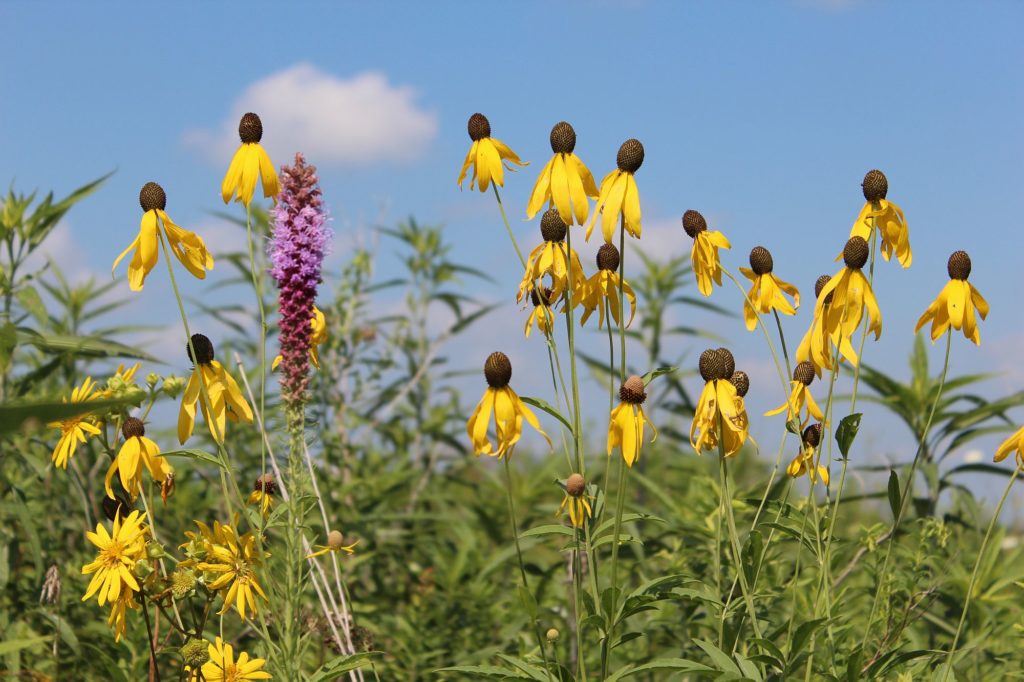Midewin is a window into our prairie past. But look closely and you’ll see it is also a lookingglass through which we may step back in time – millions of years ago – when much of North American was emerging from a shallow inland sea.
As a habitat, prairie is the new kid on the block. Following the retreat of the last glaciers, prairie emerged in North America about 8,000 years ago and continued to evolve until we plowed it all up. Beginning in the early 1800s, it took little more than a century for us to destroy 99.9 percent of the prairie in Illinois.

Since the establishment of Midewin National Tallgrass Prairie in 1996, the US Forest Service and its nonprofit partners and volunteers have recovered nearly 5,000 acres of native prairie habitat. That’s about twice as much as exists in all of the other prairie remnant sites combined throughout the entire state.These big open spaces at Midewin provide critical habitat for imperiled grasslands birds, such as this young dickcissel still getting the hang of how best to perch on the jungle gym stems of rattlesnake master.

There are now nearly 350 plant species flourishing at Midewin, including common milkweed, a critical food source for increasingly uncommon monarch butterflies.

Beyond the birds and butterflies, there is a family of bugs (with apologies to entomologists, but the alliteration was too tempting) that likewise call Midewin home and speak to its more ancient habitat roots.
For much of its history, Illinois – in fact most of North America – lay under a warm, shallow ocean. About 325 million years ago, the waters began to recede, leaving in their wake a delta swamp. According to the Illinois State Geological Survey, the great delta forests of the time were patrolled by “dragonflies as big as hawks.”
Dragonflies were among the first winged creatures to evolve over 300 million years ago – before birds. Today, there are about 3,000 species of dragonflies. I’m not sure how many inhabit Midewin, but there are quite few. Including this newly emergent female ruby meadowhawk (notice the forewing not yet fully expanded and hardened.)

Note, too, that the meadowhawk is perched atop a spore-bearing cone of common horsetail, itself among the oldest surviving plant families. By the time horsetails appeared – about 150 million years ago – so, too had dinosaurs.
Unfortunately, weathering and erosion are the likely culprits as to why there are no dinosaur fossils yet discovered in Illinois. However, evidence of the ancient coal forests of 325 million years ago remains underground in nearby Coal City, named for the coal that formed as a result of trees and other plants being buried in mud and compacted over time.
Evidence of the ancient shallow seas likewise remains underground within the very footprint of Midewin – in the form of dolomite that was formed of billions upon trillions of seashells. In some areas, this dolomite remains very near to the surface, which underpins a distinct and very rare type of prairie.
Above ground at Midewin, evidence of its ancient past lives on in wetland stands of horsetail and the many different kinds of dragonflies that hunt their prey (and sometimes mate) on the wing, just as they did millions and millions of years ago.



